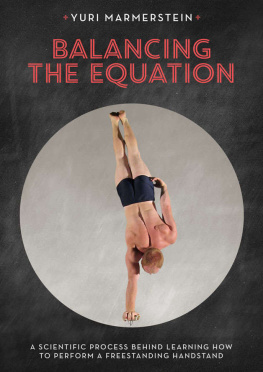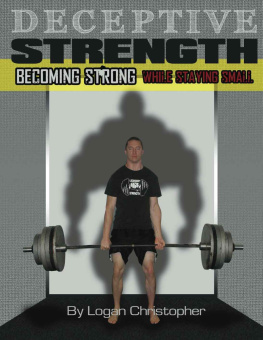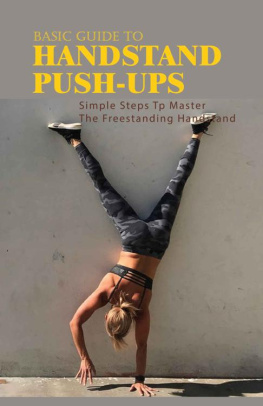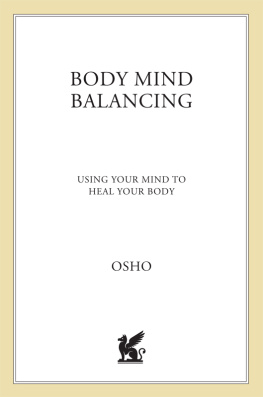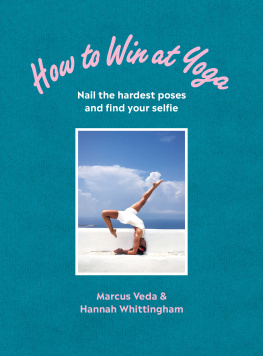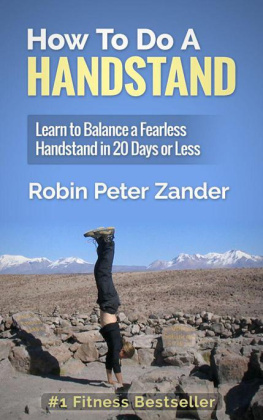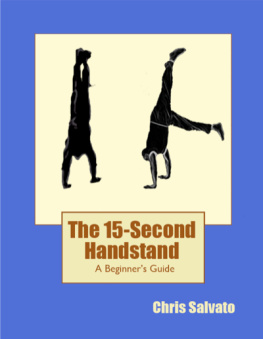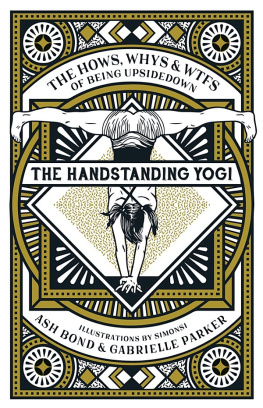Balancing the Equation
By Yuri Marmerstein
Balancing the Equation
Published by Tris Satori at Smashwords
Copyright 2015 Yuri Marmerstein
Edited by Mike Chomitsch
Cover art by Fiona McCready
Handstand model is Missy Schaaf
Photos taken at LOracle Circus, Gymnastics, and Fitness Center
st edition
Published: 4 November 2015
Contents
Introduction
People by nature love to be inverted. Dont believe me? Watch kids on a playground: They love to be upside down every chance they get. Kids are naturally drawn to inverting themselves. I have found that performing handstands near children gets them to instantly attempt the same regardless of their strength, coordination or skill level.
However, just like many other traits and skills, the love for inversion gets lost by the time they grow up.
We can rekindle this love for inversion by practicing the easiest possible way to invert: the handstand.
The handstand requires no equipment, just some flat ground, a wall (if needed) and your own body. This is quite a small investment for the potential positive outcomes.
Hand balancing is a very enjoyable practice with numerous benefits including, but not limited to, increased strength of the shoulders, wrists and fingers, in addition to improved body awareness and coordination. Beyond that, it is a unique display of mastery of ones own body.
Unfortunately, hand balancing can be very frustrating to learn on your own. It is an incredibly complex skill, and there is a reason why few people do it well.
This was one of the things that initially drew me to the art; there is no way to bypass the work you have to put in.
The good thing is that learning to stand on your hands follows the same principles and progressions we all used to learn to stand on our feet. However, as adults we no longer have the luxury of time like we did when we were infants (think about how many hours a day you spent learning to stand on your feet). This is why I am going to streamline the process for you and take out some of the guess work. I will set out a clear method to help you understand how these skills are learned in your own body. My intention is to give enough concepts so that you can learn how to teach yourself.
This book will talk about the fundamentals of handstand training, and the best way to work up to holding a solid freestanding handstand. I also write under the assumption that you do not have regular access to a training partner. While having a partner can help greatly with some of the progressions, the program is designed for solo training.
My method differs from that of other disciplines that involve hand balancing such as gymnastics, breakdancing or capoeira. The handstand is a major facet of these styles of movement, but it is only a fraction of the whole. Despite including handstands as a regular part of their training, the percentage of athletes who have the skill mastered is still fairly small. Even though we will be borrowing some concepts from gymnastics, capoeira and breakdance, this system will go into much greater detail. The handstand is a means to an end in the above arts, but for us it is both the beginning and end goal.
About Me
I am not a gymnast or circus artist trained from childhood. In fact, I had little acrobatic training as a child.
Many people make the excuse that they are unable to do something because they were not trained from a young age. Does being trained as a child make a difference? Absolutely. There are certain levels that cannot be achieved without it; however, it is not a valid excuse. The learning process simply needs to be altered for adults.
In hand balancing, I am mainly self-taught. I have not had a proper teacher and learned with very little material and reference. I started training because I loved it, and I continue for that same reason. For me, there is no end goal other than the continued refinement of my own practice.
I started hand balancing at a fairly advanced age (when it comes to acrobatics) with the standard approach of trying to kick up, flailing about, and falling on my back. I managed to make progress through pure obsession but it took a long time. Its not a method I recommend to others.
Being self-taught provides me with a unique advantage. I achieved what I did by taking the longest possible way to get there. I have literally tried everything and made every possible mistake. Ive discovered things through trial and error and know what works and what doesnt. Afterwards, I created my method of teaching the handstand utilizing the mistakes I made.
I have also been very lucky to be able to train with several world-class athletes and artists who have given me fantastic advice and inspiration.
This book is a collection of ideas I have been exposed to over the years as well as many of my own original ideas. Of course, everything has been done before. Just because hand balancing is making a comeback to popularity does not mean that it hasnt been around longer than any of us have. Its not the exercises here that are unique but rather the perspective behind them.
I break the path to freestanding balance down into five stages, each with a certain amount of acclimation required prior to moving on. In order, the five stages are: alignment, support, inversion, support plus inversion, and finally balance.
Once freestanding balance is achieved, it opens up unlimited possibilities to continue the art.
Chapter 1:
Alignment
Introduction to Alignment
The road to balance begins with alignment.
A handstand is most efficient and generally better-looking when the joints of the body are stacked on top of another. In addition, a well-aligned handstand is better able to handle an increased load and leads into more advanced elements with less difficulty.
Alignment is about learning what cues are required in your own body to create a certain shape, in this case a straight line or as close as we can get. This is a combination of positioning the shoulders, back and hips to get as close as possible to a straight line.
Note that having proper alignment is by no means a prerequisite for having a solid handstand. This is where we will bring up the old-time strongmen and hand balancers. These guys were able to perform incredibly difficult feats, all with broken handstand alignment. It is quite possible to achieve a high level of hand balancing proficiency without having a straight line, but there are certain techniques that can make some of the advanced elements easier to learn.
In other words, a broken handstand is not wrong, it just isnt always ideal.
The intent with the following exercises is to teach your body what the positions feel like and apply them later.
Back to Wall Alignment
The first exercise we are going to perform will require a wall.

(leg image) Stand facing away from the wall with your legs straight and feet together. It is acceptable to have your heels a few inches or even a foot or more away from the wall, as this is not the focus of the exercise. If you have big glutes, moving your feet further from the wall may even be necessary to complete the exercise.
(right image) While facing away from the wall, attempt to remove all space between your back and the wall. This is accomplished by tilting the pelvis forward and contracting the ribs into your body which causes the back to flatten. Keep the back of the head touching the wall for this exercise to further help simulate the final handstand position.
Do not make the attempt to move on until you can get your back completely flat. One way to check your position is to attempt to slide your hand under your lower back; you should not be able to.
Next page
